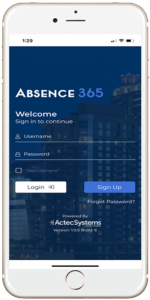 HR needs modern solutions to improve the accuracy of attendance tracking. Upgrading outmoded systems such as manual record-keeping or physical timecards saves money and improves productivity. Antiquated legacy systems for attendance will always fail to meet expectations. Businesses that invest in modern attendance software can reap the following benefits:
HR needs modern solutions to improve the accuracy of attendance tracking. Upgrading outmoded systems such as manual record-keeping or physical timecards saves money and improves productivity. Antiquated legacy systems for attendance will always fail to meet expectations. Businesses that invest in modern attendance software can reap the following benefits:
- Improve accuracy and compliance. The risk of clerical errors is high for manual or low-tech attendance systems. Even a small margin of error can result in significant fiscal mistakes. Overpaying or underpaying employees hurts the organization’s bottom line and can lead to compliance issues. Investing in absence management software can eliminate clerical errors for accurate timekeeping, payroll, and complying with Department of Labor regulations.
- Curtail time theft. Time theft is one of the biggest knocks against manual timekeeping systems. Employees can alter their hours worked to conceal if they arrive to work late or leave early. These outdated systems also allow for buddy punching, which occurs when one employee clocks another in or out to hide attendance infractions. While 10 minutes here or there may not seem like much, the American Payroll Association reported that buddy punching costs organizations $373 million every year. Efficient time tracking software can help curtail these issues.
- Improve productivity. Robust attendance tracking systems do more than simple attendance keeping. Many include features like submitting PTO requests so employees can request time off without a convoluted chain of emails. This reduces the amount of time managers spend on HR tasks, which allows them to focus on more relevant projects.
- Actionable insights. Absence management software provides businesses with attendance data and trends. This information can pinpoint departments with chronic tardiness or isolate individual employees trending toward absenteeism. Knowing where to focus improvement efforts yields better results than issuing a company-wide generic message about attendance.
Antiquated absence tracking methods can hurt profits, cause compliance headaches, and lack data to identify attendance problems. Actec’s absence tracking mobile app is a self-service tool that captures all your employees’ absence data, ensures compliance with labor laws, and more. Contact us to learn more about modernizing your absence management system

 Many startups and several small businesses often rely on a single individual to manage human resources tasks. Some business owners make this decision due to the small nature of the company and perceived lighter workload. However, even the smallest of businesses have to comply with labor laws and other work regulations.
Many startups and several small businesses often rely on a single individual to manage human resources tasks. Some business owners make this decision due to the small nature of the company and perceived lighter workload. However, even the smallest of businesses have to comply with labor laws and other work regulations. Remote employees add a layer of complexity to absence management. Many employers have a hard enough time keeping track of who arrived and at what time at their brick and mortar offices. Remote teams are even more difficult to keep tabs on due to the virtual nature of their work. For businesses that suspect or know they have an attendance problem, the following mistakes could be the cause:
Remote employees add a layer of complexity to absence management. Many employers have a hard enough time keeping track of who arrived and at what time at their brick and mortar offices. Remote teams are even more difficult to keep tabs on due to the virtual nature of their work. For businesses that suspect or know they have an attendance problem, the following mistakes could be the cause: Businesses can’t function much less turn a profit if the employees don’t show up to do the work. When absences begin piling up, it has a domino effect on the rest of the company. Projects may fall behind schedule if a key employee is regularly missing. This bleeds into other projects as well as team members may need to stop what they’re doing to catch up on the absent employee’s work. This effects workplace morale as well, causing a company-wide productivity problem.
Businesses can’t function much less turn a profit if the employees don’t show up to do the work. When absences begin piling up, it has a domino effect on the rest of the company. Projects may fall behind schedule if a key employee is regularly missing. This bleeds into other projects as well as team members may need to stop what they’re doing to catch up on the absent employee’s work. This effects workplace morale as well, causing a company-wide productivity problem. Keeping track of employee’s attendance is vital to the success of any business. Attendance is a significant indicator of the overall health of any company. Whether employees are consistently tardy, call out often without notice, or work well after closing time, they can cause a chain of events that derail the company’s goals. For example, employees that have frequent, unplanned absences affect workflow and can delay projects. Conversely, employees that clock 60-hour work weeks on a regular basis run the risk of burnout, which stymies productivity.
Keeping track of employee’s attendance is vital to the success of any business. Attendance is a significant indicator of the overall health of any company. Whether employees are consistently tardy, call out often without notice, or work well after closing time, they can cause a chain of events that derail the company’s goals. For example, employees that have frequent, unplanned absences affect workflow and can delay projects. Conversely, employees that clock 60-hour work weeks on a regular basis run the risk of burnout, which stymies productivity. When a significant number of employees begin to call out of work or a single employee incurs an abnormal number of unscheduled absences, most businesses know their first step to rectifying the issue is to identify the cause. Stress outside of the workplace, unpleasant managers, and more can contribute to employee absenteeism. However, with COVID-19, businesses already know the why. The pandemic has changed everything about “business as usual” and absence management is no exception.
When a significant number of employees begin to call out of work or a single employee incurs an abnormal number of unscheduled absences, most businesses know their first step to rectifying the issue is to identify the cause. Stress outside of the workplace, unpleasant managers, and more can contribute to employee absenteeism. However, with COVID-19, businesses already know the why. The pandemic has changed everything about “business as usual” and absence management is no exception. For many employees, the COVID-19 pandemic has reached a turning point. As many states scale back their stay at home orders, certain employees will return to the workplace while others may remain remote depending on the situation. Regardless, it represents yet another change in an already turbulent time. With so much uncertainty, it’s highly likely that the majority of employees are struggling with stress. High levels of tension can tank productivity and morale as well as lead to problems with attendance.
For many employees, the COVID-19 pandemic has reached a turning point. As many states scale back their stay at home orders, certain employees will return to the workplace while others may remain remote depending on the situation. Regardless, it represents yet another change in an already turbulent time. With so much uncertainty, it’s highly likely that the majority of employees are struggling with stress. High levels of tension can tank productivity and morale as well as lead to problems with attendance.